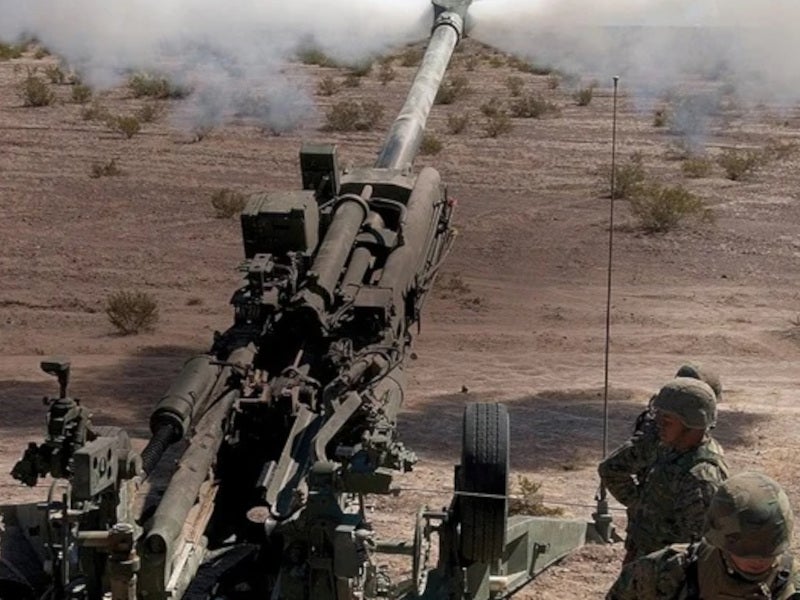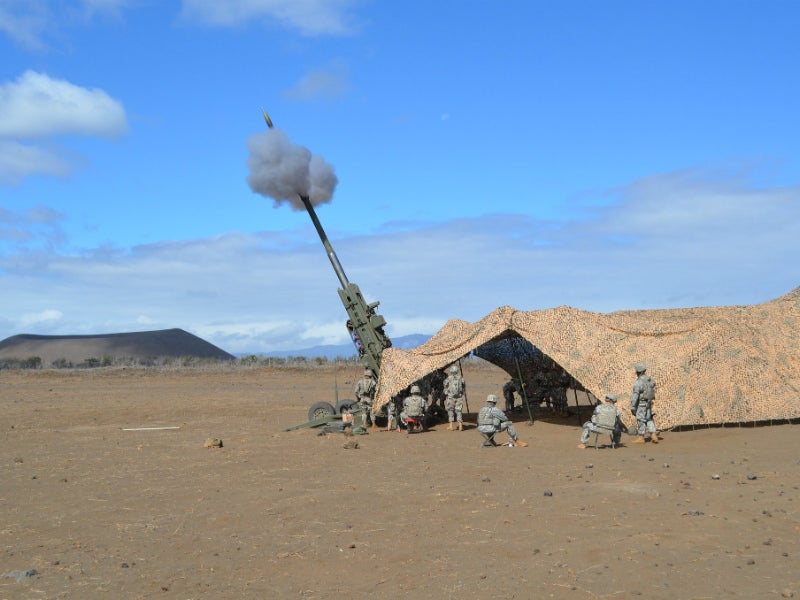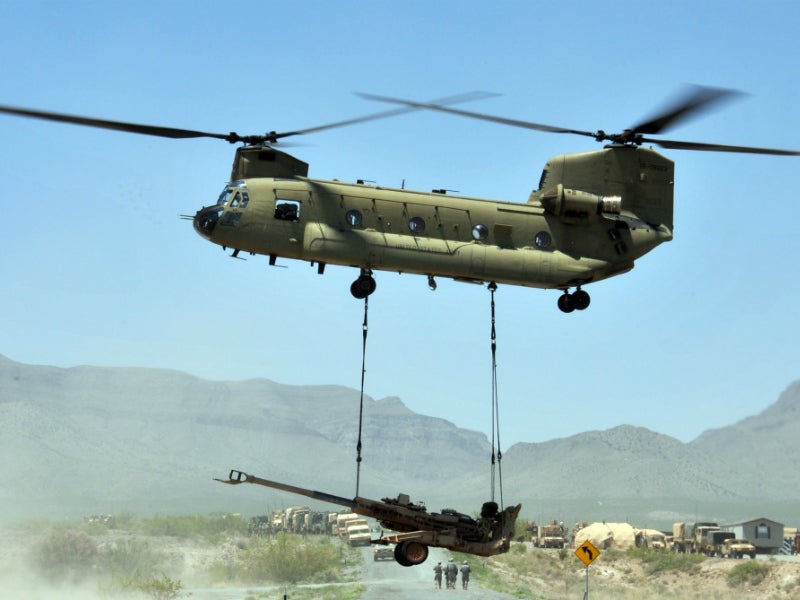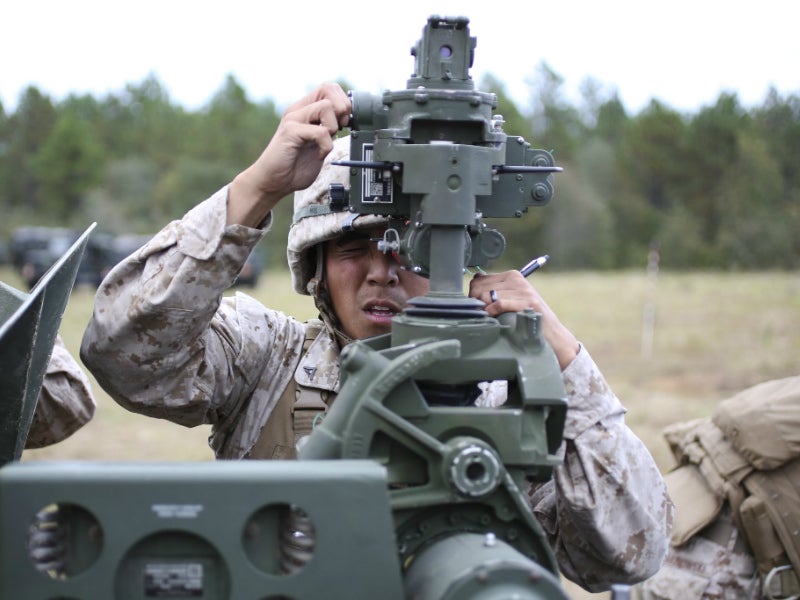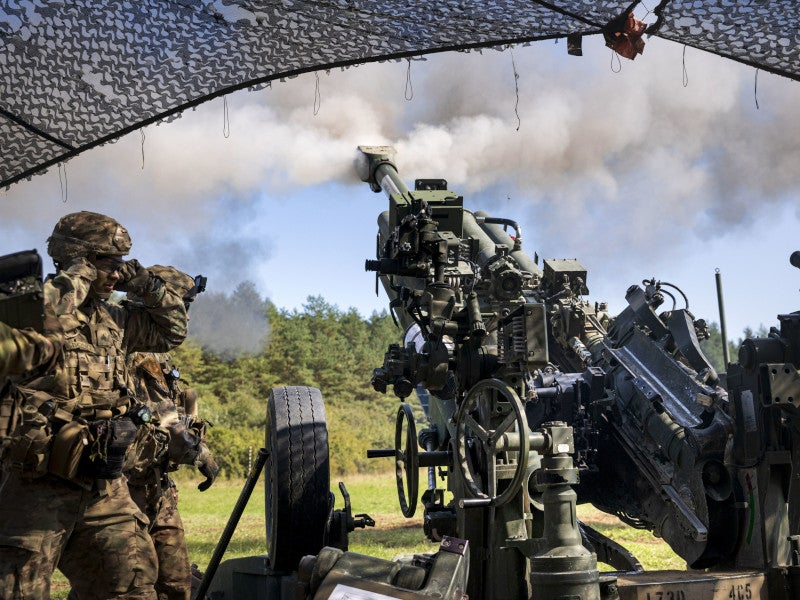The Ultralightweight Field Howitzer, designated M777 in the US, was selected to replace the existing inventory of M198 155mm towed howitzers by a joint US Army/Marine Corps initiative in 1997.
The M777 howitzer was developed by BAE Systems, a defence company based in the US. It is currently in service with ground forces in the US, Ukraine, Australia, and India.
In January 2024, BAE Systems inked a deal with the US Army for the major structures of the M777 lightweight howitzer under an Undefinitised Contract Action, which is limited to $50m.
BAE Systems is set to work with its UK and US supply chain to manufacture crucial titanium components for the M777 gun, which will enable the company to restart production in the UK. The first major structures are expected to be delivered by 2025.
M777 howitzer development details
The M777 was developed through a five-year engineering and manufacturing development (EMD) programme. The first of five EMD systems was delivered in June 2000. A low-rate initial production (LRIP) contract for 94 systems was awarded in November 2002.
Operational testing with the United States Marine Corps (USMC), during which nearly 12,000 artillery rounds were fired by four production systems, was completed in December 2004.
A contract for full-rate production of 495 systems was awarded to BAE Systems in April 2005, and the following month the USMC began fielding the M777 with the 11th Marines unit at Twentynine Palms in California.
In July 2004, the M777 howitzer completed a series of airlift tests with the US Marine Corps MV-22 Osprey tiltrotor aircraft. The M777 was carried as an external load for a distance of 69nm during the tests.
The first 18 systems were delivered to the US Army’s 2nd Battalion, 11th Field Artillery in Hawaii in October 2006.
M777 howitzer A1 and A2 variants
The M777 is the artillery system for the Stryker Brigade Combat Teams. It is normally operated by a crew of eight men, but can be operated with a reduced detachment of five.
The systems fitted with the digital fire control system are designated M777A1, and those with the software update that allows the firing of the Excalibur projectile, M777A2.
M777A2 received full material release in July 2007, clearing the upgrade for fielding. All M777A1 systems were upgraded to the A2 standard.
The M777 was deployed by the US Army and Marine Corps to Afghanistan in December 2007 and to Iraq in 2008.
The Excalibur projectile was first deployed in Afghanistan in March 2008. By August 2008, more than 400 systems were delivered to the US Army and USMC.
The projectile was inducted by the Indian Army in October 2019.
Design and construction of the Ultralightweight Field Howitzer
The construction of the M777 makes extensive use of titanium and titanium castings, enabling a weight reduction of 3,175kg compared to the M198 howitzer, which it replaces in the US Army and USMC inventory.
M777 armament
The M777 matches the firepower of current generation 155mm towed systems at less than half the weight. The howitzer is equipped with a 39-calibre barrel. The muzzle velocity (at Charge 8 super) is 827m/s.
The maximum firing range is 24.7km with unassisted rounds and 30km with rocket-assisted rounds. The M777A2 can fire the Raytheon/Bofors XM982 Excalibur GPS/Inertial Navigation-guided extended-range 155mm projectiles using the Modular Artillery Charge Systems. Excalibur has a maximum range of 40km and an accuracy of 10m.
The first firing trials of the M777A1 with Excalibur took place in August 2003, while the first production rounds were delivered in September 2006. Excalibur successfully completed a limited user test in March 2007. It was first fielded in Iraq in May 2007 and in Afghanistan in February 2008.
The M777 is able to deliver up to five rounds a minute under intense firing conditions and is able to provide a sustained rate of fire of two rounds a minute.
Fire control
The LRIP systems employ an optical sighting system for direct and indirect firing by day or night. Full production systems are fitted with the General Dynamics Armament Systems Towed Artillery Digitisation (TAD) system. LRIP systems will be retrofitted with TAD.
The TAD digital fire control system provides on-board ballistic computation, navigation, pointing and self-location, providing greater accuracy and faster reaction times, and also includes a laser ignition system, electric drives for the howitzer’s traverse and elevation, and a powered projectile rammer.
M777 mobility
The M777 has a production weight of 3,745kg and can be transported by helicopter, transporter aircraft and ship. The howitzer can be towed by an air-braked 4×4 vehicle greater than 2.5t.
The maximum towed road speed is 88km/h and the towed cross-country speed is 50km/h.
The load on the towing eye is rated at 60kg, while the towing ground clearance is up to 660mm.
Contractors involved
RO Defence, formerly the Armaments Group of Vickers Shipbuilding and Engineering was involved in the development of the M777.
United Defense Industries, a defence contractor which was acquired by BAE Systems in 2005, was responsible for the final assembly, test and delivery of production systems for the US.
The titanium used for the construction of the howitzer was supplied by RTI International Metals, a titanium mill products producer based in the US.
Horstman Defence Systems, a military vehicle suspension systems supplier based in the UK, provided the hydrostrut suspension system.
BAE Systems and PTC Industries, an engineering components manufacturer, agreed to produce titanium castings for the Indian 155mm M777 Ultra-Lightweight Howitzer (ULH) at the latter’s Lucknow facility in October 2022.
M777 howitzer orders
In April 2008, BAE Systems received an order for an additional 87 M777 systems for the US Army and USMC, for which deliveries began in 2010. In August 2008, a further 43 systems were ordered.
The first four of six M777 systems were supplied by the USMC to the Canadian Army in December 2005 under a foreign military sales (FMS) contract.
The systems were deployed to Afghanistan in February 2006. A further six systems have been ordered and are in service. In June 2008, Canada requested a further 25 systems, bringing the total to 37.
Australia requested the foreign military sale of 57 M77 howitzers in July 2008.
BAE Systems has developed a mobile version, the M777 Portee, which is mounted on a purpose-built 8×6 Supacat vehicle. The vehicle was first shown at Eurosatory in June 2006.
In November 2012, the Indian Ministry of Defence (MoD) requested 145 M777s from the US Government. The MoD, however, failed to sign a deal by the October 2013 deadline, causing the company to shut down production of the M777 howitzers at Burrow-in-Furness, UK.
Later in November 2016, the Indian Ministry of Defence and the Government of the US agreed on a FMS contract. The US Department of Defence awarded a $542m contract to BAE Systems for the procurement of 145 M777s in January 2017.
Two M777 weapon systems were delivered to India in May 2017. In October 2018, BAE Systems secured an order for an additional 18 M777 155mm howitzers from the US Department of Defence.
In October 2018, BAE Systems was awarded a contract by the Nato Support and Procurement Agency to supply Bofors 155mm BONUS ammunition to the US Army’s M777 howitzers.
In November 2021, the US Army purchased additional 155mm BONUS precision-guided munitions for use with M777 towed ultra-lightweight howitzers and M109 self-propelled howitzers.
In April 2022, Australia announced the supply of six M777 155mm lightweight towed howitzers and accompanying ammunition to Ukraine in response to Russia’s unlawful invasion.
In the same month, Canada supplied Ukraine with an undisclosed quantity of M777 howitzers and the corresponding ammunition.

